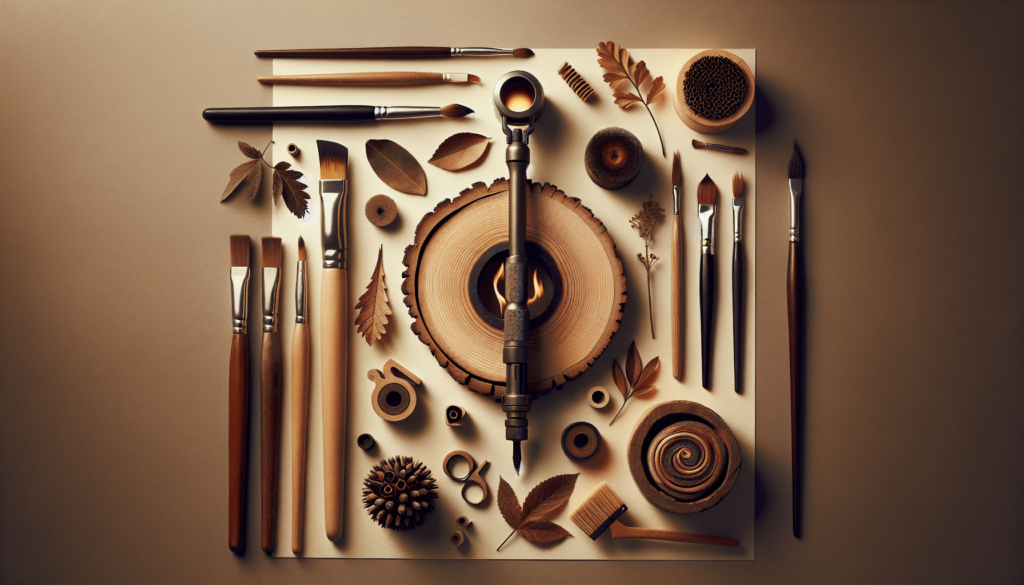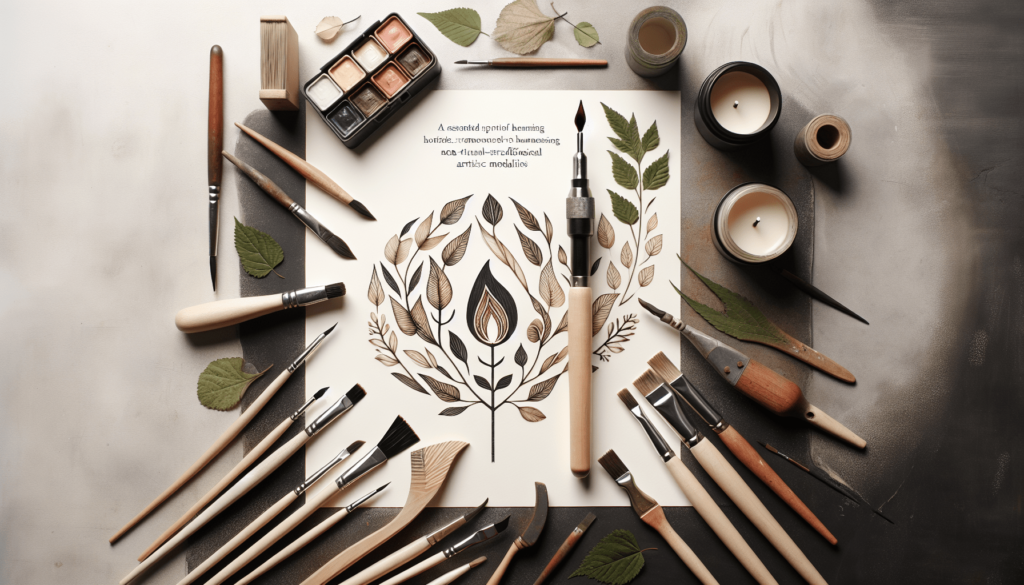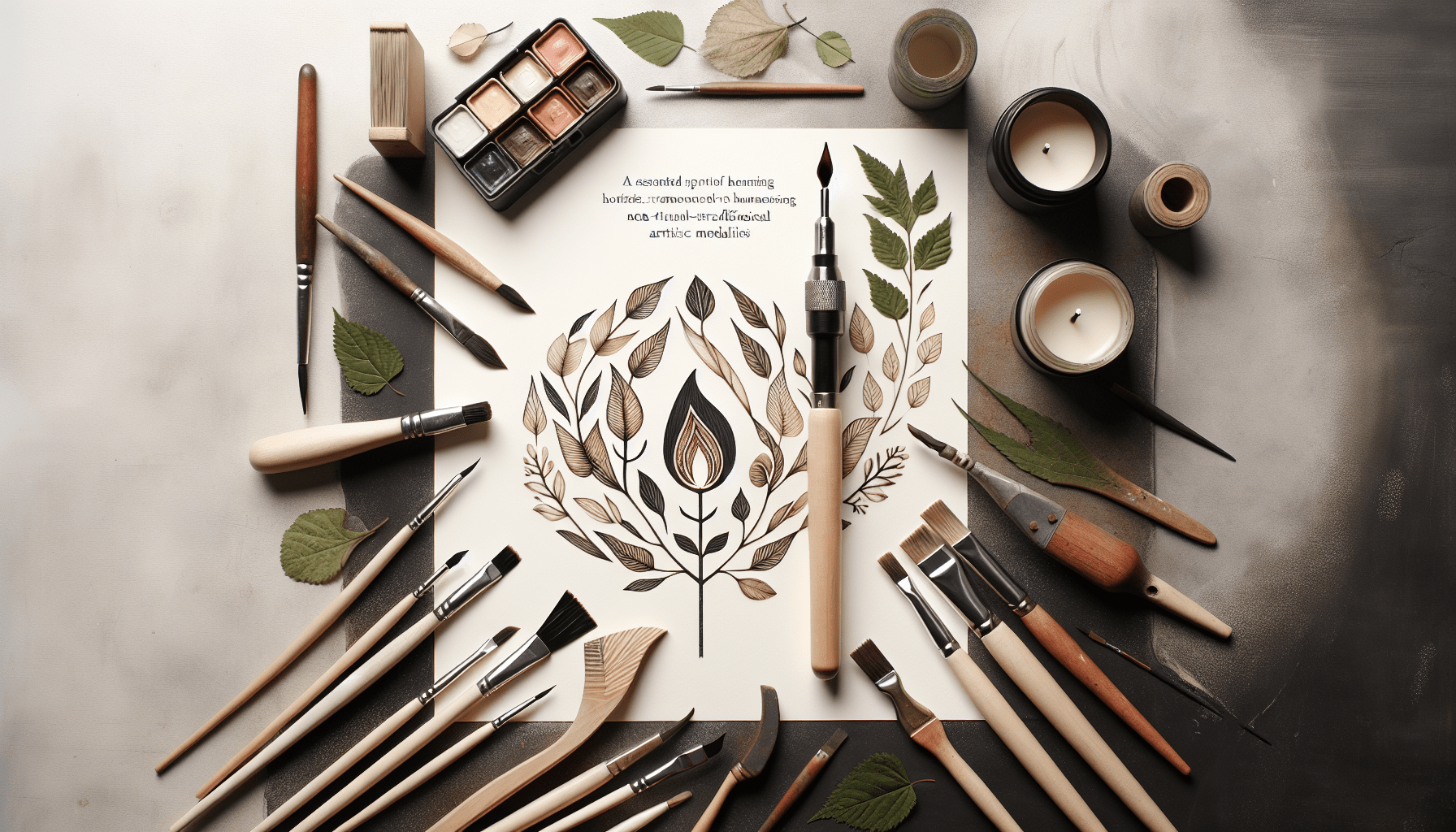Have you ever been happily crafting along, making some delightful wood-burned designs with your trusty scorch marker, only to realize you’ve run out of the stuff at the absolute worst moment? I know I have! You’re suddenly left staring at a half-finished project, wishing there were an easier way to find a quick and creative substitute. It’s like standing in front of your fridge with an empty carton of milk, thinking, “What now?”
There’s a bit of a thrill in figuring out these little crafty conundrums, isn’t there? It’s almost like a mystery show where you’re both the detective and the culprit of your crafty crime—minus the high stakes, of course. Let’s take a moment to unravel the mystery of finding the best substitute for a scorch marker.
Understanding Scorch Markers
Before we jump into replacements, let’s take a minute to appreciate what scorch markers actually do. Scorch markers are specialized pens filled with a unique chemical solution that reacts with heat to create wood-burned effects on various materials like wood, canvas, and leather. They offer this beautiful blend of precision and ease, letting you skip the whole, “Let’s not burn down the house,” negotiation with a traditional pyrography tool.
Their main job is simple: they let us craft neat designs safely, quickly, and with a lot less of that burnt aroma wafting through our homes. Scorch markers take our doodles and transform them into permanent, artistic features, all with the magic of household heat tools like heat guns or even a preheated oven.
Why You Might Need a Substitute
So why are we here? For one, maybe it’s Sunday evening, and every craft store within a 20-mile radius is closed. Another reason could be doing things on a budget; scorch markers aren’t the cheapest tool in the craft drawer. There’s also the allure of experimentation—mixing things up can lead to innovation and unique results. Whatever the cause, it’s good to flex those creative resourcefulness muscles every once in a while.

Common Substitutes
Wood Burning Kits
Let’s start with the heavy hitters—wood-burning kits. These are like scorch markers’ older siblings, a bit harder to use but oh-so rewarding when you get the hang of things. Wood-burning kits come with metal tips that heat up for engraving designs directly onto the wood. Sure, they require a little finesse, but they provide a similar effect, offering depth and texture to your projects.
Gel Pens and Heat Guns
Now, let’s consider gel pens. A right color gel pen can mimic the layout planning aspect of scorch markers. You can draw or trace over your project, and then use a heat gun (carefully!) to darken those lines. It’s important to ensure you’ve got heat-safe gel pens, otherwise, they might melt in a way that’s less artistic and more agony.
Acid Solutions
If you’re in a mad scientist mood and feel adventurous, dabbling with acid solutions might be up your creative alley! Some crafters use weak acid solutions to etch designs onto wood. You’d want to approach this with care—remember your favorite rubber gloves and safety goggles because safety, though not particularly sexy, is essential.
Mixing Homemade Solutions
Why not play the role of alchemist and whip up a DIY scorch solution? One popular concoction involves mixing one teaspoon of ammonium chloride with half a cup of warm water. Using a fine paintbrush or an empty marker pen, you can apply your mixture onto the wood, then heat it to reveal your design using a heat gun. It’s like being a chemistry class whiz with artsy perks.
Advantages and Drawbacks
Wood Burning Kits
Advantages:
- Deep, textured designs
- Doesn’t require separate heat
- Long-lasting tool
Drawbacks:
- Steeper learning curve
- Requires electrical outlets
- Possibility of burns (ouch)
Gel Pens
Advantages:
- Easy to use
- Widely available
- Good for detailed designs
Drawbacks:
- Risk of melting
- Requires heat gun or similar
- Needs careful selection for safety
Acid Solutions
Advantages:
- Unconventional and unique
- Provides an etched look
- Can be inexpensive
Drawbacks:
- Safety hazards
- Longer application time
- May require post-treatment
Homemade Solutions
Advantages:
- Budget-friendly
- Customizable formula
- Satisfaction of DIY
Drawbacks:
- Requires purchase of chemicals
- Can be messy
- Needs accurate mixing for desired effect

When to Opt for Each Substitute
Different projects call for different tools—it’s part of what makes crafting a kind of personal journey. Ask yourself a few questions when picking a substitute. How detailed is your design? Do you need portability? Are you comfortable wielding a heat tool? Think of it like crafting as a puzzle where solutions depend heavily on the pieces of your project.
For Detailed Designs
If precision is paramount, wood-burning kits or detailed gel pens are your go-to. Both offer control and allow for intricate lines, although each carries its own challenges regarding application and finish.
For Simple Designs
Simpler patterns can be achieved using homemade solutions, offering a more relaxed approach to crafting. They mix well with less structured projects where every line doesn’t need to be laser-accurate.
For Safe Crafting Around Kids
Safety first when kids are helping—and steer clear of acid solutions with little ones nearby. Opt for gel pens and newbie-friendly wood-burning kits under supervision. It’s about fun, not a trip to the ER, right?
How to Experiment with Substitutes
Once you’ve settled on a promising substitute, give yourself some grace and room to experiment. Craft some little test pieces to get a sense of how the medium behaves. Whether that’s scrap wood, an old piece of canvas, or even a recycled wood plaque, allowing for error keeps frustration at bay and you attached to all your fingers.
Set Up a Workstation
A dedicated, organized workspace makes all the difference. Line your table with newspaper or wax paper to catch spills. Spend some time getting your tools and materials arranged where they’re easily reachable so that you can enjoy a smooth and less chaotic session.
Practice Makes Perfect
Those first few attempts? They’re purely practice. Embrace the imperfections—they’re wisdom in disguise. What’s most important is keeping at it until you become more comfortable with your substitute, which will eventually feel less like an alternative and more like a trusty sidekick.
Conclusion: The Scorch Marker Community
Let’s clear the smoke about scorch marker substitutes—they can be practical and even enrich your experience with wood-burning crafts! Substitutes like wood-burning kits, gel pens, and homemade solutions can keep your creativity ablaze while saving the day when you’re out of a scorch marker.
Crafting isn’t just about the product; it’s also about the process. There’s something beautifully satisfying about figuring out cheats and hacks to achieve your desired effect. It’s like piecing together a personal cheat sheet for your creativity.
So the next time you find yourself with an empty scorch marker, remember, there’s always another way to bring your design to life. You might even find a new favorite method along the way—and that’s a pretty good mystery to solve.
And now—I won’t say goodbye, because that’s a bit too formal for this chat, wouldn’t you agree? Instead, let’s just say… ’til next time!

